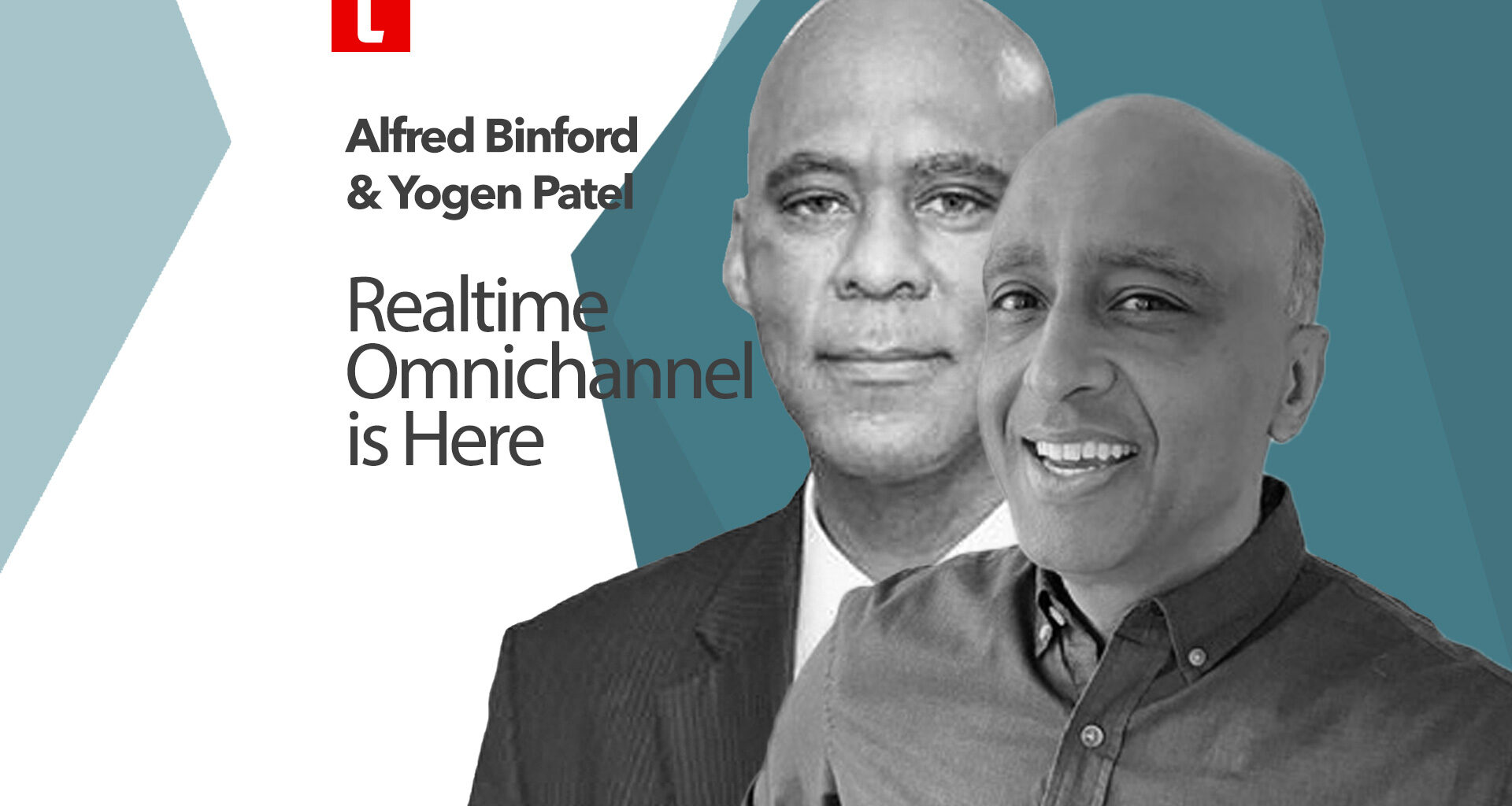We sat down with Alfred Binford, President of Customer Engagement Solutions at CSG, and Yogen Patel, VP of Product Management, Digital Engagement Solutions at CSG, to talk about the debut of their customer engagement hub, Xponent, and what that will mean for the company and for the marketplace.
Below is the full transcript of our conversation.
TheCustomer
There’s a lot going on at CSG right now. I mean, product launches, announcements, news briefings, new hires … it seems like CSG is expanding Xponentially.
Yogen Patel
Thanks Mike. So, let me start with a quick overview of what the Xponent platform is. So, this is a digital engagement platform to enable real-time contextual experiences for organizations. So, the Xponent platform, you know, we’ve been at it for for a while, bringing all the pieces together. We’ve been combining a number of pieces of capabilities that enable that real-time, contextual experience that organizations can provide.
So, the first piece of platform includes what we call the customer data platform. And the customer data platform is a capability that allows aggregating data from multiple sources – interaction data, behavioral data, profile data – and it allows organizations to create an active customer profile that can be used to extract insights for the purpose of driving those contextual experiences that I mentioned before. So that’s kind of the first piece of the Xponent platform.
The second piece is the journey hub and think of the journey hub as the engagement brain. This is the thing that looks at the data from the customer data platform, extracts the insights and then makes decisions on what types of treatments to execute for a given customer depending on what step of a journey that they may be on and more importantly what channels to utilize. In many cases organizations are utilizing multiple channels to engage with the customers and decisions need to be made on what’s the most appropriate treatment given the moment that the particular customer is in – and what channel to orchestrate the treatment. So that’s kind of the second piece of the Xponent platform.
The third piece, which is really significant in terms of its innovation, is what we call “journey as a service.” So, Mike think of this as taking industry insights and knowledge of journeys, whether it’s retention or collections. What we have done is pre-packaged models, graphs, decision tables for certain journeys to really streamline, simplify and speed up the realization of these capabilities for organizations.
So, it’s the customer data platform, the journey hub, the journey as a service, which is a packaging of the key artifacts required to enable those journeys. All that put together is what the Xponent platform is. And the key thing is that putting this capability set to get an integrated manner is what’s critical for customer success – and that’s unique. So historically, they’re bringing bits and pieces of these capabilities all over the place but what we’ve done with Xponent is bring it together, put in those fast start models and capabilities, and then enable customers to realize the best business outcomes quickly and with low risk. So that’s kind of Xponent in a nutshell.
TheCustomer
So, the acquisition of Kitewheel is a fairly recent one. I’m struggling to put a date to it but it has to be less than three months ago.
Alfred Binford
Yes sir, it was July of this year, 2021.
TheCustomer
So very, very recently and here we are a few short months later and you’ve fully integrated and embedded those services – and that’s a complex service set – into your offerings. I actually think that’s pretty remarkable. I talked to a lot of providers out there and the technological challenges something like that would present are not insignificant and here you are in market with it already.
Alfred Binford
So, as you may recall we had partnered with Kitewheel for several years and that partnering gave us kind of a jump start on what came to be the Xponent strategy in figuring out how Kitewheel would fit in. And how we would not just take Kitewheel and fit it in but make continued investments to have Kitewheel go on steroids and then have Xponent come to the fore as, Yogen has laid out. So, I think the fact that we partnered so successfully, literally for years, and I can’t give you the exact number for obvious reasons but millions of dollars of business together – that was a huge bit of strategic synergy that we knew that would be exponentially improved by way of the acquisition. So, we got a jump start and as you know we acquired some really good people – some real good – I call them customer experience scientists – literally PhDs in this stuff and that really made a huge difference. So, they were a very welcome part of the team and they play a significant role in Xponent in that complete ecosystem that Yogen artfully laid out.
TheCustomer
Let’s talk a little bit about what the people on the other side of this equation might be expecting because I know you well enough to know that you’re already well-predicting the future of the verticals that you operate in. And I don’t know if you’re if you’re able or willing to comment on some of that, but I think that would be really fascinating and we can, along the way, we can talk about how Xponent might help support some of those thoughts.
Alfred Binford
Well, I always start with our most deeply-worked vertical which is cable and telecom, which was at the foundation of the company almost 40 years ago. If you look at that industry you see hyper competition where if you’re a legacy (I don’t mean in the negative context) been an established pay tv cable provider when your main solution is entertainment broadband. And over that broadband connectivity you bring entertainment righ,t basic package, pay-per-view ott, you bring telephony, and you’re also now packaging wireless.
Like we’re seeing our friends at Spectrum do magnificently, that is bringing very heightened competition to the classically-defined telecommunications market in most verticals. And you see that competition played out on TV – if you turn on the TV you’re just inundated with ads and everyone says they’ve got 5g, everyone says their 5g is everywhere, everyone says they’ve got all the devices you want from the iPhone to fill in the blank, all the great devices. So, the question is how do you compete?
We often see that competition in the form of very aggressive price competition – how many lines for a hundred dollars? How many, how much data for free? And I believe whilst you have to compete, have your core value proposition, be very strong and have the multi-part of your bundle, have competitive pricing. But I believe by working with CSG – I’d rather help customers turn up CX rather than lower pricing, right. And so that’s one thing that’s playing out that we see every day – just hyper competition in those markets. And you have to tune the customer experience to differentiate. Because if you only want to differentiate on price, that’s not an exciting proposition for your investors.
Yogen Patel
You know, I think, building on that, Alfred – clearly experience is the source of sustainable differentiation. Nothing new but much more relevant now than ever before. And there’s three things that are happening Mike, that make now the time to do real-time contextual engagement. One is consumer expectations. There is this expectation of being able to communicate with my provider in any channel of my choosing, whenever I want. And many of these customer journeys are non-linear and they’re intersecting. I start in one channel, I’m going to continue another, and finish elsewhere, right. So that’s the first piece of the tipping.
The second thing that’s happening that makes it real is that there’s data that’s out, there’s data that sits in all these systems that have been invested-in over the last few years, in these big digital transformation issues. So now you actually have the data that you can actually harness and do something with.
And the third thing is the tool sets – the cloud-based as a service tool sets – that can be consumed, you know. Whether it’s a real-time analytics or journey management so when you think about the combination of expectations that are heightened, the fact that the data is there within all these systems and you have all these cloud-based tool sets you can leverage now, you’ve got all the pieces to bring the urgency as well as the ability to realize it. And so this the time, indeed is now to get this stuff out there, even though the aspiration has been around for a while.
Alfred Binford
And Mike, if I could just add to the point Yogan raised about, because what you saw hopefully in the Xponent diagram, is the comprehensiveness of the platform. And you would expect that -we’ve been at this for you know, 40 plus years. But it’s intentionally comprehensive but also modular.
We recognize the point you raise Mike, that you know, customers have heard providers say, “Oh just buy my CRM and you’ll be there” or “just by my solution and you’ll be there”, or “just buy my data warehouse and you’ll be there”, “just buy some consulting for me”, so we recognize that. And I think one approach we’ve taken, under Eric and Yogen’s stewardship, is that you don’t have to throw out what you’ve spent – that you can actually use that. Because we’ve got a kind of that modular approach and we can take, as you saw with the work we did with Kitewheel, for years we could apply our journey analytics and journey orchestration on top of your CRM and give you better value at the point of service, right, where your CRM now gets steroids buyer journey platform.
Now of course we’re CSG and we build the most magnificent product provisioning OPC billing systems. We love that, however, we recognize that customers want to use what may be in place and we think that the comprehensive but yet modular approach allows us to meet customers where they are and get fast results. Because I think that’s the key customers want to know – it’s not going to take you three years to get the first dollar of ROI. We actually are working with customers – we’ve got some wonderful examples where we started work on day one and by day 120 they were seeing ROI and lifted results in terms of more automated service calls completed, where everyone doesn’t go through your conversational AI and only say “operator, operator, operator” right, or only put zero in your IVR right, or only you know, close the bot so they can get a human being and it defeats the purpose.
So, we find ways to leverage what the customers have in place and plug into that ecosystem and whilst we love to sell it all we’re happy to sell only part of it to get fast results for the clients and we think that’s also a differentiating approach.










